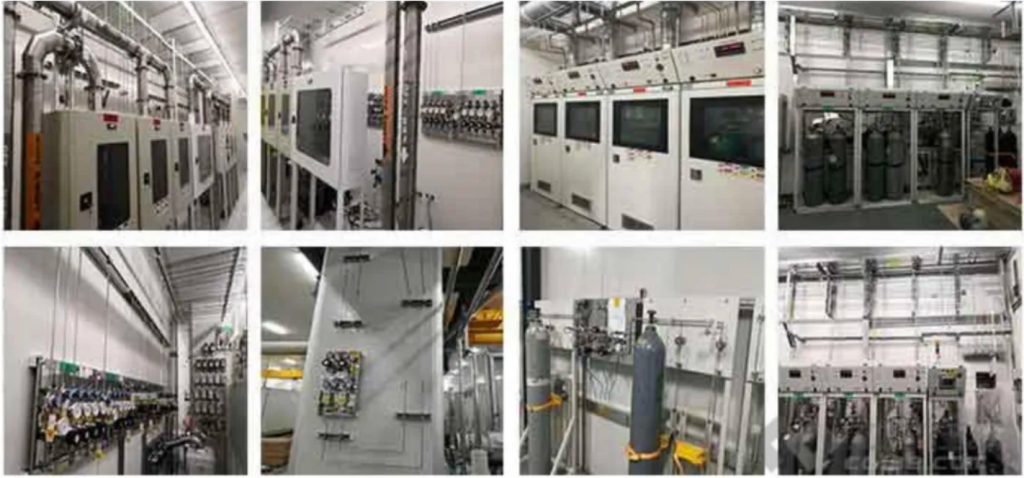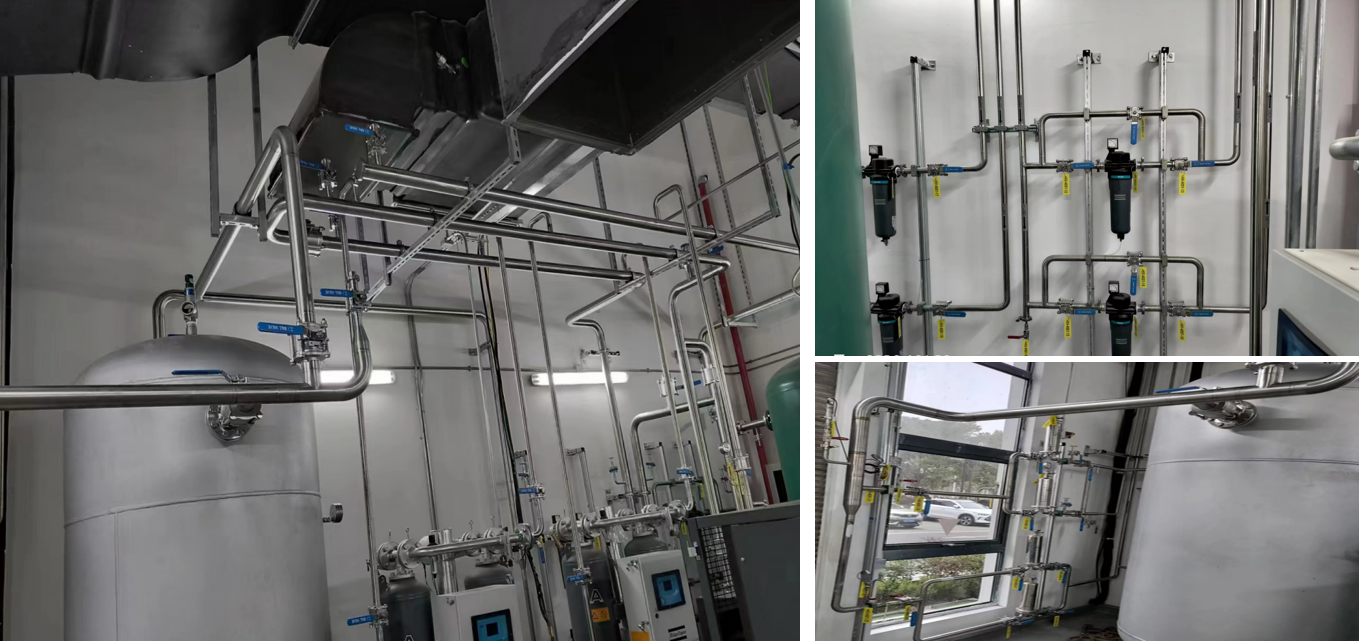High purity stainless steel pipelines are widely used in various application fields, including special gas pipeline systems for high-purity and ultra high purity gases, flammable and explosive gases, toxic gases, secondary piping, and other gas equipment.
During the stainless steel smelting process, each ton can absorb approximately 200g of gas. After the processing of stainless steel, not only are various pollutants adhered to its surface, but also a certain amount of gas is absorbed in its metal lattice. When there is airflow passing through the pipeline, the gas absorbed by the metal will re-enter the airflow, polluting the pure gas. When the airflow inside the pipe is discontinuous, the pipe material adsorbs the gas passing through under pressure. When the airflow stops passing, the gas adsorbed by the pipe material undergoes depressurization and desorption, and the desorbed gas also enters the pure gas inside the pipe as impurities. At the same time, the cycle of adsorption and desorption causes the metal on the inner surface of the pipe to produce a certain amount of powder, which also pollutes the pure gas inside the pipe. This characteristic of the pipe is crucial. In order to ensure the purity of the transported gas, it is not only required that the inner surface of the pipe has a very high smoothness, but also has high wear resistance.

High purity gas piping technology is an important component of high-purity gas supply systems, and is a key technology for delivering high-purity gas that meets the requirements to the gas consumption point while maintaining qualified quality; The so-called high-purity gas piping technology includes the correct design of the system, selection of pipe fittings and accessories, construction and installation, and testing.
Especially some of these gases, such as SiH4, have spontaneous combustion, and once leaked, they will react violently with oxygen in the air and start burning; There is also the high toxicity of AsH3, and any slight leakage may pose a threat to human life. Therefore, the requirements for system design safety are particularly high due to these obvious dangers.
When dealing with gases with strong corrosive properties, corrosion-resistant stainless steel pipes should be used for piping. Otherwise, corrosion spots will appear on the inner surface of the pipes due to corrosion, and in severe cases, large areas of metal will peel off or even puncture, thereby polluting the pure gas transmission and distribution.
The connection of high-purity and high-purity gas transmission and distribution pipelines with high flow rates should generally be welded, and the required pipe materials should not change in structure during welding. When welding materials with high carbon content, the permeability of the welding area causes mutual permeation of gases inside and outside the pipe, which destroys the purity, dryness, and cleanliness of the transported gas, rendering all our efforts meaningless.
In summary, for high-purity gas and specialty gas transmission pipelines, a specially treated high-purity stainless steel pipe is required to ensure that the high-purity pipeline system (including pipes, fittings, valves, VMBs, VMPs) plays a crucial role in high-purity gas distribution.


